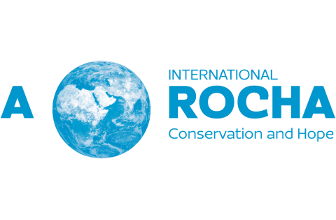The Global Problem of Plastics in the Oceans
There are 5 trillion pieces of plastic weighing over 250,000 tons afloat at sea[1] and every year more flows into God’s oceans: 8 million metric tons of larger plastic pieces[2] and another 1.5 tons of microplastic pieces[3].
It’s a Local Problem Too
One 1998 study estimated 12 metric tons of plastic and about 106 million plastic pieces on Orange County beaches[4]. While there may be some distant sources of plastic pellets and trash on southern California beaches, both the Los Angeles and San Gabriel rivers contain pellets[5] and much plastic which is washed into creeks connected to street storm drains. If plastic trash hits the gutter it will likely hit the beach too. The density of the plastic pellets determines if they sink offshore or float and are washed onto beaches.
Plastic Pellets at Southern California Beaches
Plastic pellets, also called nurdles, are the raw stock which is melted and formed at factories into many plastic items. Nurdles, are small (often 1-2mm in diameter), generally go unnoticed by people, but are eaten by both fish and birds because they look like fish eggs. Nurdles also absorb human-made toxic chemicals while in the ocean. Nurdles are spilled during transport or at the factories and some eventually enter streams and oceans via runoff or storm drains. These pellets have been found in large numbers on Orange County beaches[6] as well as in sediment off the southern California coast[7].
Plastic Trash at Southern California Beaches
Aside from beach-user litter, much plastic on the beach comes from street storm drains which drain into creeks flowing to the ocean and beach. If litter hits the gutter it will likely hit the beach too. Many animals eat the plastic or get tangled up in it. During the 2019 California Coastal Cleanup Day, in Orange County, many organizations (including SoCal A Rocha), and people (4,920 volunteers), removed 25, 681 pounds of trash from the beaches.
What Is SoCal A Rocha Doing?
We are working at Crystal Cove State Park in Orange County to determine quantities of plastic trash and nurdles at the beach. Hope International University (HIU) students do a mass collection of nurdles twice a year. Two pilot projects have already been done at Crystal Cove with HIU student help. Students collected 2,419 nurdles the first time and 6,053 nurdles the second time. We are also conducting monthly beach surveys along a line and carefully sieve and count all the plastic found. In the planning stages is work with an author of the 1998 study of plastic on Orange County beaches; we hope to duplicate that study in 2021 to see if the local plastic pollution problem is better or worse.
[1] Eriksen M, Lebreton LCM, Carson HS, Thiel M, Moore CJ, Borerro JC, Galgani F, Ryan PG, Reisser J. 2014. Plastic Pollution in the World’s Oceans: More than 5 Trillion Plastic Pieces Weighing over 250,000 Tons Afloat at Sea. PLOS ONE 9:e111913.
[2] Jambeck JR, Geyer R, Wilcox C, Siegler TR, Perryman M, Andrady A, Narayan R, Law KL. 2015. Plastic waste inputs from land into the ocean. Science 347:768-771.
[3] Boucher J, Froit D. 2017. Primary microplastics in the oceans: a global evaluation of sources. IUCN, and Global Marine and Polar Programme.
[4] Moore SL, Gregorio D, Carreon M, Weisberg SB, Leecaster MK. 2001. Composition and Distribution of Beach Debris in Orange County, California. Marine Pollution Bulletin 42:241-245.
[5] Moore C, Lattin G, Zellers AF. 2011. Quantity and type of plastic debris flowing from two urban rivers to coastal waters and beaches of Southern California. Journal of Integrated Coastal Zone Management 11:65-73.
[6] Moore SL, Gregorio D, Carreon M, Weisberg SB, Leecaster MK. 2001. Composition and Distribution of Beach Debris in Orange County, California. Marine Pollution Bulletin 42:241-245.
[7] Moore SL, Sutula M, Bitner TV, Lattin G, Schiff K. 2016. SCCWRP Technical Report 928, June 2016: Southern California Bight 2013 Regional Monitoring Program: Volume III. Trash and Marine Debris.

